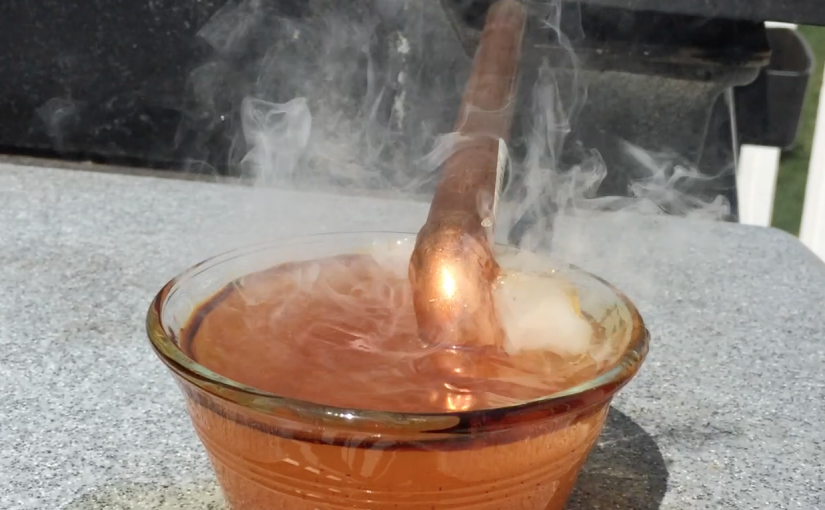Last Friday, I was on Science Friday chatting with Ira Flatow about some fun do-it-yourself things you can do at home from the second edition of Cooking for Geeks.
I already wrote up instructions for my DIY Bittersweet Chocolate Bar ; in this post I’ll share details for how to make homemade vanilla extract as well as DIY liquid smoke. Spoiler: vanilla extract is super easy; liquid smoke is super hard. These two projects are great examples of solvency, and liquid smoke demonstrates how to do what chemists call dry distillation . Science! Bam!
First, here’s the interview, courtesy Soundcloud. Scroll down for the geeky science details.
How to Make Vanilla Extract
Instructions : Slice open a few vanilla beans ( shop online for the cheaper grade B ones), drop them into a small container, and top off with vodka. Wait a few weeks and you’ll have vanilla extract. The strength of the extract will depend on the vanillin levels, which will depend on the specifics of the vanilla beans and how many used. You’ll need to experiment and adjust quantities when using your DIY Vanilla Extract in cooking.
Why this works : Different compounds are soluble in different solutions. In cooking, we use three primary solvents: water, lipids, and alcohol . Each works on different types of compounds, so matching the chemistry of the solvent to the chemistry of the volatile compound is the key to making good extracts. The same chemical principle that allows water to dissolve compounds also applies to lipids and ethanol, so which solvent to use depends on the structure of the compounds being dissolved. In the case of vanilla, alcohol (a.k.a. ethanol) works the best. If you’re making extracts from other items, you may find water or lipids work better. This is why hot peppers are sometimes infused in oil—the capsaicin dissolves better with lipids (“like dissolves like”) due to the compound’s chemical structure.
One P.S. on my explanation: most compounds are more complicated than this abbreviated explanation implies. It’s not that vanillin or capsaicin can’t dissolve in water; but the solubility is much lower than in ethanol or fats. This is why capsaicin, without any lipids around, can still dissolve into water.
How to Make Liquid Smoke
Instructions : Download my lab for How to Make Liquid Smoke (PDF). Warning: it’s a long and complicated project. Liquid smoke involves similar concepts as vanilla extract—solubility of compounds in liquids—but is much more complicate.
Why this works: To make liquid smoke, you need to heat wood chips to a temperature high enough for the lignins in wood to burn (around 752°F / 400°C), pipe the resulting smoke through water, and do so without any oxygen. The water-soluble components of smoke remain dissolved in the water, while the non-water-soluble components either precipitate out and sink or form an oil layer that oats and is then discarded. The resulting product is an amber-tinted liquid that you can brush onto meats or mix in with your ingredients. I do NOT recommend using your own DIY Liquid Smoke, except perhaps once as a curiosity project.
Do NOT make liquid smoke by soaking “smoked” wood chips in water. Properly made liquid smoke filters out many mutagenic, cancer-causing compounds; the DIY instructions I typically see concentrates those compounds into what you’re eating.
Incidentally, the wood chips turn into charcoal in the process; they’re carbonized, but without oxygen present, they can’t combust. You can create your own charcoal by sealing up wood chips inside a container that will vent out smoke but not circulate air back in. You can also make charcoal from materials besides wood. I know one chef who uses leftover corn cobs and lobster shells to create “corn cob charcoal” and “lobster charcoal,” and because some of the flavor molecules from those items are extremely heat-stable, using the charcoal for cooking imparts a whiff of those flavors as well.
